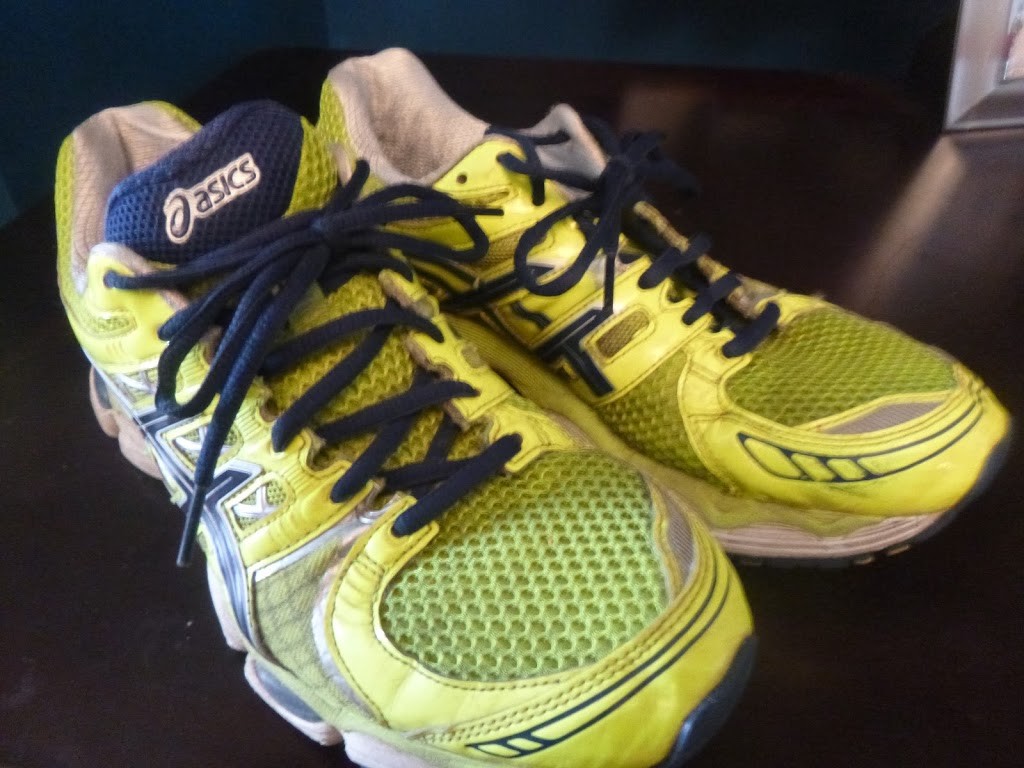Compare this picture to the last one, and you should instantly recognize a major difference. These shoes are worn down, and need to be replaced. The wear pattern on the forefoot is immediately obvious. You can also tell from this picture that the runner has a mid to forefoot foot strike while running. The heel shoes virtually no wear.
Have You Out-Run Your Running Shoes?

One of the greatest things about running, is that you don’t need a lot of equipment to get started. You need your body, and a pair of shoes. If you’re a female a great sports bra is another must have, but I will save the details of the best running sports bras to a future post.
Shoes provide the foundation that you run upon, so it’s very important to be able to recognize when you are running on worn out shoes. What are the signs?
2. Aches and Pains: You’re feeling new pains, aches, possibly even shin splints. It may be a sign that your shoes have lost their cushioning. If you feel more muscle fatigue than usual, or bilateral pain (pain on both sides of your body) it could be another symptom of running on shoes that are no longer providing support.
3. Your Shoes Show Wear and Tear: I’m not just talking about dirt, that’s a part of running in the great outdoors. I haven’t known any runners who have managed to keep their shoes sparkling and new once they start putting mileage on their shoes. The pictures below show some different shoes, and what you can look for with your wear pattern. Recognizing your wear pattern, can actually tell you a lot about your running style, and foot strike pattern.
-Examine the soles of your shoe to see if there is any visible wear. Is the tread still visible on your shoe, or is it visibly worn down? This is a picture of the bottom of my running shoe. They still have quite a few miles left on them. I chose a sturdy shoe that can take a lot of wear and tear, as well as withstanding many miles.
The heel isn’t the only place to look for wear and tear. Examine the side portion of the base of your shoe. You may notice tiny fine lines, and wrinkles in the cushion of your shoe. If there is significant wrinkling it is a sign that your shoes aren’t as supportive as they once were.
